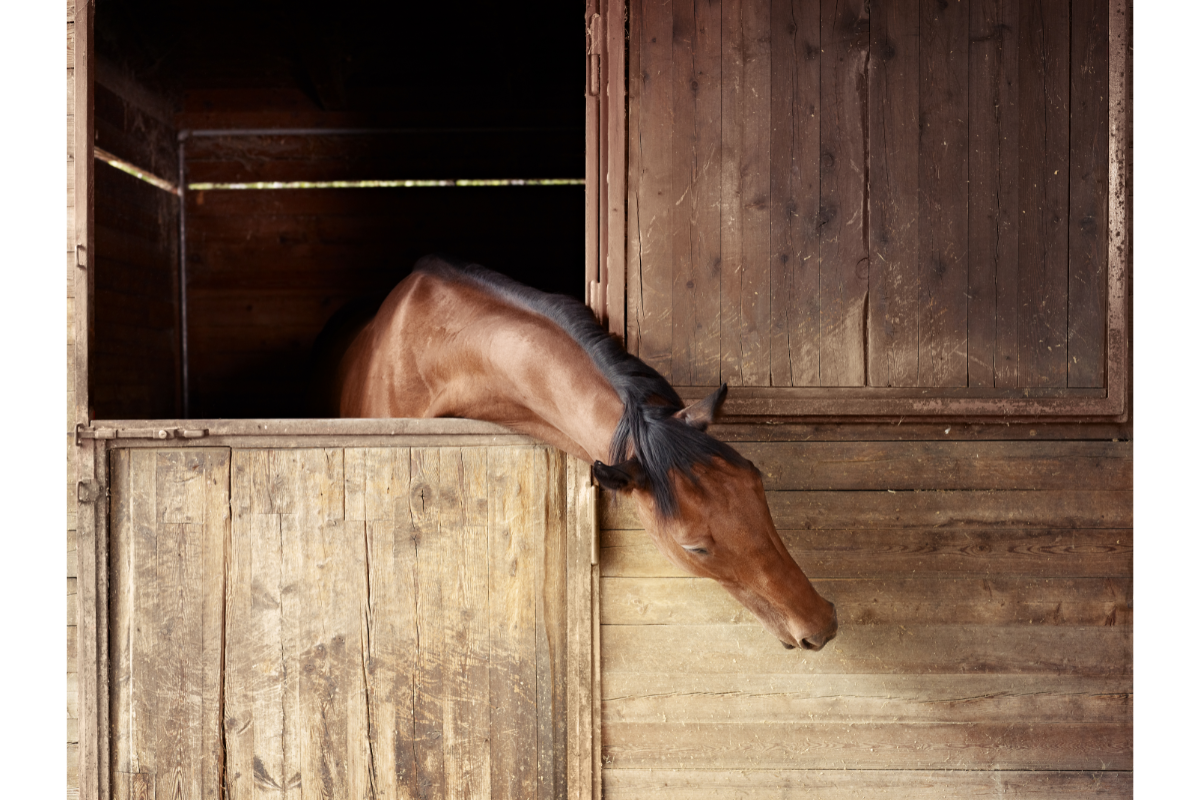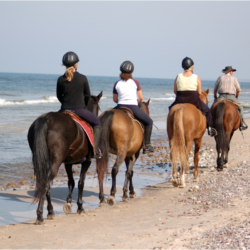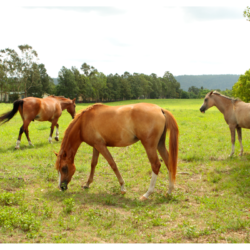The management and treatment of tendonitis in horses requires a rigorous, tailored approach. Tendonitis, often caused by stress or trauma, mainly affects the superficial and deep flexor tendons. Early detection, followed by appropriate management, is crucial to minimise damage and promote healing. This article explores the essential steps in diagnosis, effective treatment methods and rehabilitation strategies to optimise recovery and prevent recurrence.
Convalescence, an important stage
Once the diagnosis has been made, the veterinary sur geon will suggest a suitable treatment protocol.
In the case of tendonitis, rest is essential to allow the tendon to rebuild. The length of rest varies according to the severity of the tendonitis, ranging from a few days for a simple inflammation to several months for ruptured fibres. Some horses will remain in a closed stall, while others may be in the pasture/paddock with some light activity.
Rest alone is not enough to prevent recurrences (76%). In the event of marked lameness, the horse should remain at strict rest for at least three months, under veterinary supervision.Feed must be adapted to prevent weight gain.
Rehabilitation plays a crucial role. The horse should return to work gradually, following the veterinary surgeon’s instructions:
- Walking at a walk pace on hard ground.
- Split trotting (alternating walking and trotting on hard/soft ground).
- Re-education to canter in a straight line on firm ground.
- Progressive resumption of training (jumping, running, etc.).
The duration of each stage varies according to veterinary recommendations. Deep ground should be avoided to prevent recurrence. In the event of tendonitis, immobilising the affected limb for the first two weeks is essential: bandage, Robert-Jones dressing, plaster cast or splint.
A programme of convalescence and progressive rehabilitation improves results and limits recurrence. Studies show that a horse in pasture has a 75% recurrence rate, compared with 50% for a horse in controlled convalescence. It can take six months to a year for the horse to return to normal work, depending on the severity of the injury.
Adapting the shoe
Shoeing and trimming play an essential role in the treatment of tendonitis, by limiting stress on the affected tendon. Adapting the way the feet are care d for during the healing process and when the horse returns to work is crucial. Farriers and vets work together to determine the most appropriate solution.
For deep flexor tendonitis, the vet often recommends an upside-down shoe or an egg-bar shoe, sometimes with heel compensation in severe cases. These shoes modify the footing to relieve tension on the perforator, by raising the heels and using a short pinch trim to make it easier to start the foot.
In cases of mild damage diagnosed at an early stage, or after successful rehabilitation, a bunion shoe with a lot of rolling helps to prevent recurrence by limiting the heels from sinking into the ground, thereby reducing stress on the deep flexor.
For superficial flexor tendonitis, the right shoe will take the pressure off the foot. A well-balanced shoe, with a covered toe and slender temples, helps the heels to sink into the ground, transferring forces to the deep flexor tendon, which relieves the superficial tendon.
Shoeing and trimming therefore play an integral role in the management of tendonitis, helping to adjust support and minimise stress on the affected tendons, thereby facilitating healing and preventing recurrence.
Veterinary medicines and techniques
Oral, injectable or gel anti-inflammatories reduce inflammation and pain in the horse’s tendon. Although inflammation promotes healing, it is crucial to control it to avoid negative effects. The administration of Tiludronate (Tildren) has been shown to be effective in some deep flexor tendonitis associated with navicular syndrome, improving locomotion in mild lameness.
Neurectomy, which cuts the sensory nerve to relieve pain, may be considered for severe cases but remains controversial and is reserved for retired horses. Surgical treatment, such as styletting (longitudinal incisions in the tendon), promotes vascularisation but is controversial and reserved for specific cases.
Regenerative medicine includes several promising options:
- PRP (Platelet Rich Plasma): PRP stimulates the synthesis of type I collagen, essential for tendon structure. Obtained by centrifuging blood, it contains numerous growth factors that accelerate healing.
- Mesenchymal stem cells: Injected into the tendon under ultrasound guidance, they differentiate into tenocytes or orchestrate tendon regeneration through anti-inflammatory and trophic effects.
- Bone marrow concentrate: Taken from the sternum or pelvis, centrifuged bone marrow provides a concentrate rich in stem cells and growth factors, promoting healing.
Local care includes:
- Application of cold to the limb to reduce pain and inflammation.
- Application of vesicatory (heating product) to stimulate tendon healing. Only during the healing phase.
Laser or shockwave therapies can also be used, although their effectiveness is controversial.
Physiotherapy
Other solutions can be considered in addition to the methods mentioned above. Rehabilitation techniques have developed considerably in recent years. Follow-up by an osteopath or masseur may prove beneficial to your horse during its convalescence. Laser and shockwave therapies are also becoming increasingly common.
Cryotherapy is an effective method, using carbon dioxide compressed to 50 bars at a temperature of -80°C. This technique enables a skin temperature of 4°C to be reached in just a few minutes, producing analgesic, anti-inflammatory, muscle-relaxing and anti-oedematous effects. Cryotherapy should be applied to dry, toned skin to avoid the pain of wet cold and for optimum effectiveness.
The effects of the laser include electromechanical, photoablative and thermal actions. The laser can ionise atoms. This creates a plasma that generates shock waves capable of breaking up tissue structures. It also has photochemical and anti-inflammatory effects by modulating pro-inflammatory cytokines. The laser increases NO levels in tissues.
Therapeutic ultrasound uses mechanical and thermal mechanisms. In pulsed mode, they perform a fibrolytic micromassage. In continuous mode, they produce heat by friction. This leads to local vasodilatation and improved organisation of tendon fibres.
Cold hydrotherapy is also beneficial in reducing swelling and relieving pain. Compression bandages can stabilise and support the tendon, helping to prevent fluid build-up.Hyaluronic acid can be injected to promote tendon healing by inhibiting inflammation.
Finally, spas with cold water at between 4 and 6°C and water jets can reduce inflammatory processes and improve healing thanks to their analgesic, draining and massaging effects.





